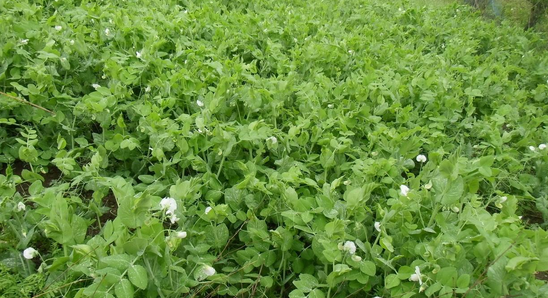The main varieties of early-maturing peas are Zhongwan No.6 and Zhongwan No.4. After years of planting, the two varieties have the advantages of early market, good commodity, high yield and high efficiency, and wide adaptability. At present, they have become the main varieties of early-maturing peas.
The high-yield cultivation techniques for early-maturing peas in winter should focus on the following points:
First, timely planting. The suitable growth temperature of peas is 9 to 23 degrees. The best sowing date for winter sowing is on the 20th-25th of November, sowing too early. Due to the high temperature in the early stage, the peas grow faster, and the early jointing is vulnerable to low temperature freezing in January and February, resulting in reduced production. When the sowing is too late, the pea vegetative growth period is under low temperature conditions, and the growth is insufficient, and high yield cannot be obtained. Therefore, it is necessary to strictly control the sowing date and achieve timely planting.
Second, increase the amount of seeds used. Since the growth of Poa pea variety shorter than the old, 15-20 days may be listed earlier, and dwarf upright, suitably high density, in order to improve the yield, seed must be increased by an amount, typically 10 kg mu species, 35 cm hole spacing on demand, spacing 10 cm, 2-3 capsules per hole, can also be carried out in strips, with a basic seedling of 35,000 per mu.

Third, reasonable fertilization. Because the early-maturing pea rhizobium is less than the old variety, the nitrogen-fixing ability is not as good as the old one, so the old habit of applying only phosphate fertilizer and no nitrogen fertilizer should be changed. Nitrogen, phosphorus and potassium must be combined to achieve high yield. Generally, when the land is prepared, the base fertilizer is more than 20 tons of pig, sheep, chicken and duck manure, and 45% of the ternary compound fertilizer is 50 kg. When planting, 25 kg of calcium, magnesium and phosphate fertilizers or strips are applied. After the spring, it can be poured with 10 kg of ammonium sulphate to promote spring hair. In the early stage of flowering and pod-forming, it is necessary to re-apply the pod fertilizer, and it can be applied with 20 kg of ammonium sulfate per acre. In the grouting granule period, the root dressing can be carried out, and the seed is treated with 100 kg of potassium dihydrogen phosphate and 40 kg of water to increase the grain weight.
Fourth, chemical weeding. After sowing, the bud can be used with 50% acetochlor 100 ml or 20% dichlorfen 200 ml for 50 kg. The whole field spray is best applied when the soil is wet after rain, which can obviously improve the control effect.
Fifth, disease prevention and pest. Should be in late February to early March 20 g of 10% imidacloprid Decis 6 ml prevention leaf miner, aphids and green caterpillar. When pest control can be added to 75% chlorothalonil 75-100 grams of disease prevention and control.
Sixth, the timely harvesting. Generally fresh pod in late April stripping grain picking batches listed picking criteria: when the pod kernel weight up to yellow.
Poly-Lok Clip Endo Removers,Clip Endo Removers,Clip Endo Removal,Hemostatic Clip
Qingdao DMD Medical Technology Co., LTD , https://www.conston-tech.com